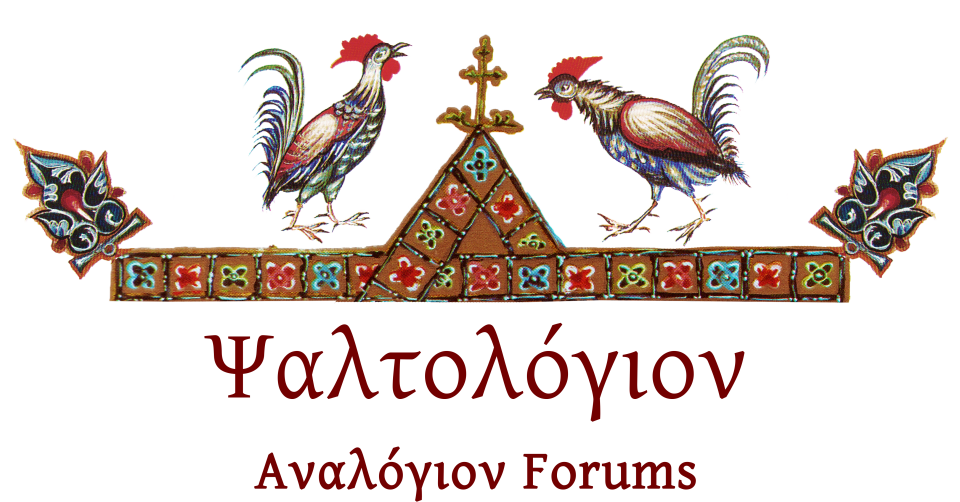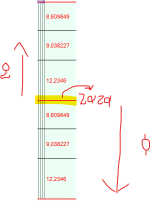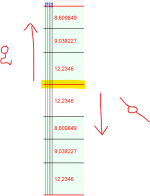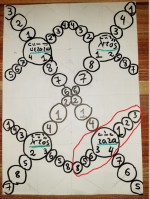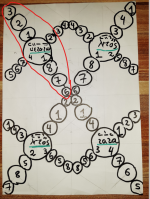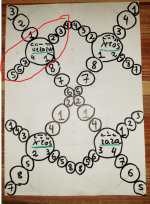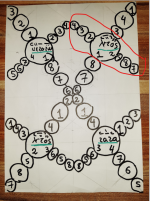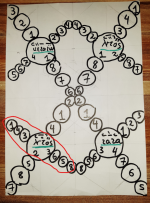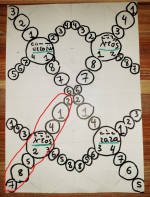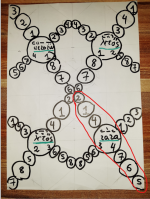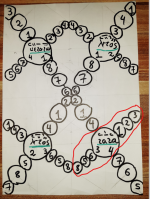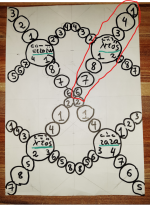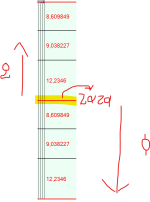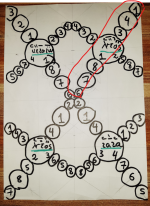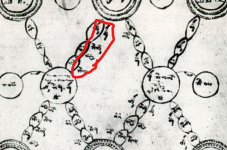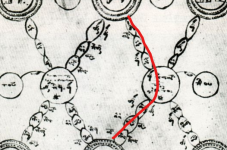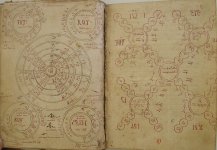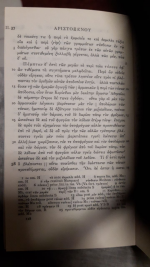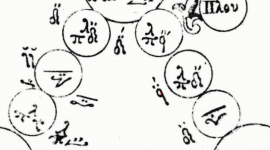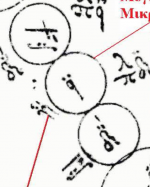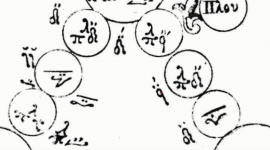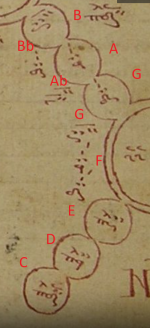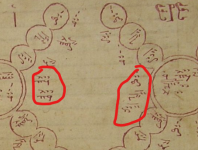brucewayne
Νέο μέλος
Could anyone explain how the diagram of John Plousiadinos works? The one with four large circles connected by smaller circles.
I have tried to read the English Wikipedia page on it, but it is a mess. Or perhaps someone has a better reference or article in English, Greek or Russian?
I think the basic idea is that any sound can be considered to be any other sound. For example if you start at πλ δ and go up α β γ then you can find nana in any large circle and jump off from there. For example, you could treat γ as πλ δ and perform the same progression again which gives you a triphonic scale like G A B C D E F. This is indicated by starting at the large bottom right circle and traveling up and right twice.
But you could instead switch to the large bottom left circle and treat γ as β and travel up and left as γ δ α giving G A B C Db Eb F. I am not sure the usefulness of such a progression, but that’s how I am interpreting the diagram. Is this correct? Maybe such a modulation was common in medieval chant?
What is the diagram’s relevance to chant today and what was its relevance to medieval chant?
I have tried to read the English Wikipedia page on it, but it is a mess. Or perhaps someone has a better reference or article in English, Greek or Russian?
I think the basic idea is that any sound can be considered to be any other sound. For example if you start at πλ δ and go up α β γ then you can find nana in any large circle and jump off from there. For example, you could treat γ as πλ δ and perform the same progression again which gives you a triphonic scale like G A B C D E F. This is indicated by starting at the large bottom right circle and traveling up and right twice.
But you could instead switch to the large bottom left circle and treat γ as β and travel up and left as γ δ α giving G A B C Db Eb F. I am not sure the usefulness of such a progression, but that’s how I am interpreting the diagram. Is this correct? Maybe such a modulation was common in medieval chant?
What is the diagram’s relevance to chant today and what was its relevance to medieval chant?
